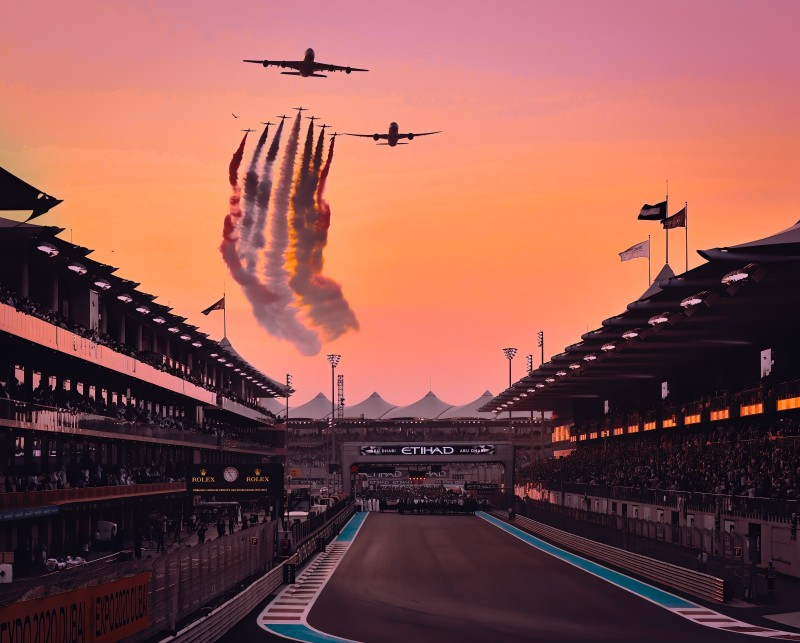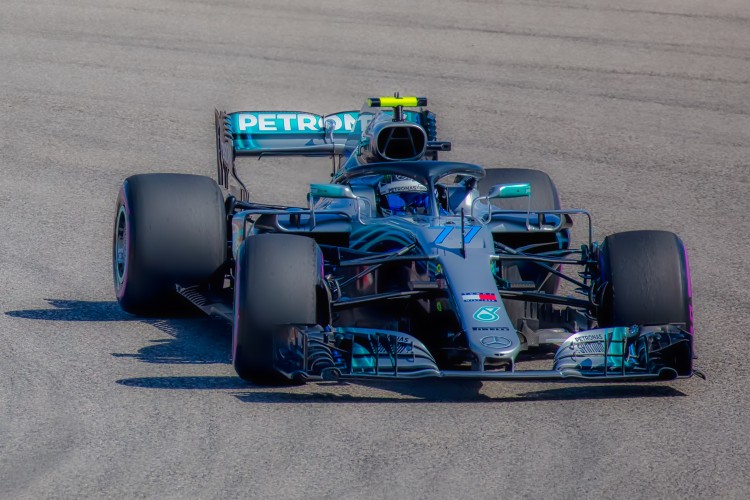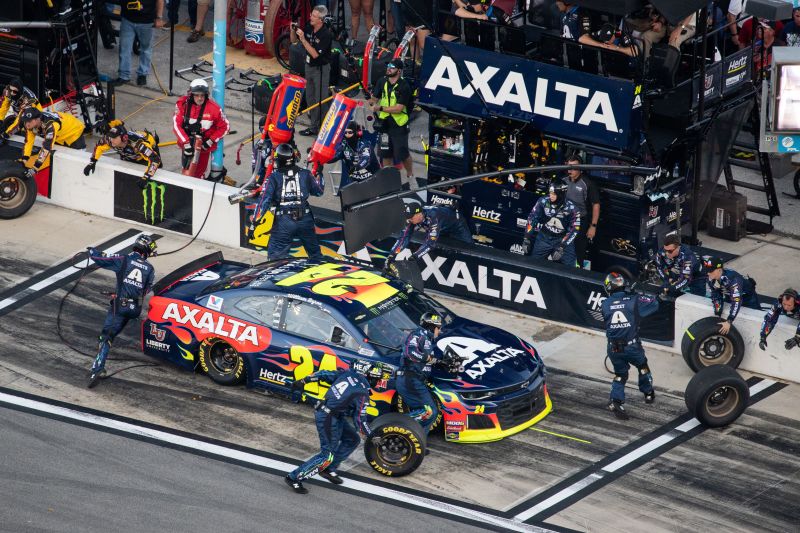
Both NASCAR and IndyCar are extremely popular in the United States of America, which is known as the “racing capital of the world.” The first season of NASCAR was held in 1948, whereas the first IndyCar race took place in 1992.
Each of the activities is engaging, and as a result, they attract sizable audiences both live and on television.
However, the way the cars are constructed and the regulations that regulate the competition are not the same. The courses that they race on are different, as are the speeds that can be reached on those courses.
The purpose of both NASCAR and IndyCar is to compete at the highest level possible. The winner of the race is the vehicle that is the first to cross the finish line.
However, the two cars’ construction methods, as well as the regulations and guidelines that govern the races, are very different from one another.
So what is the difference between a NASCAR car and an IndyCar car? A NASCAR car is robust and will appear very similar to the sedan that you keep in your driveway. In contrast, an IndyCar is designed specifically for speed.
Both the courses that they compete on and the strategies that the teams of the two series use are very different from one another. There is a significant gap between the two.
Both the size of their engines and the manner in which fuel is fed into them are distinct differences between two. The engines used in NACAR use fuel injection.
In a NASCAR race, it is relatively uncommon for cars to bump into one another and even touch, but an IndyCar driver may be forced to pull out of the race if they make contact with another vehicle.
During the decade of prohibitions in the United States of America that began in the 1920s, bootleggers would transport “moonshine” in their stock cars, which is where the idea for NASCAR originated.
They required these automobiles to be able to go quickly over unpaved roads. The objective was to beat the police cars to the “finish line”.
NASCAR, which stands for the National Association for Stock Car Auto Racing, LLC, was established in 1948 by Bill France Sr.
Hulman & Company launched the IndyCar racing series in 1992 as part of the Indy Racing League. The sport, which is also known as Championship Car racing or Indy racing, has a significant following throughout a vast swath of the Americas, Australia, and Japan.
In 2019, Roger Penske became the new owner of the famous IndyCar Series after purchasing the racing championship from Hulman & Company.
Table of Contents
Is It Riskier to Compete in NASCAR Than It Is In the Indianapolis 500?
When compared to NASCAR cars, the safety features of an Indy car are more limited. The driver is not provided with any kind of protection for his head because the car has an open cockpit.
In addition, an IndyCar is designed specifically for racing at high speeds and is significantly quicker than a NASCAR car. As a direct consequence of this, NASCAR drivers have far more reaction time available to them in the event of an emergency compared to IndyCar drivers.
If you want to know What’s the Difference Between IndyCar and F1? (YOU DIDN’T KNOW), click here.
A higher speed results in the automobile colliding with a greater force when it hits something, which increases the risk for both the driver and the audience.
The NASCAR cars are noticeably heavier and more robust. When compared to an IndyCar, the likelihood of a NASCAR car exploding into pieces and sending debris into the audience is significantly lower.
In addition, roll cages are permitted in NASCAR, and drivers are provided with exit doors in the event that their cars are involved in an accident.
NASCAR races, on the other hand, often feature a greater number of competitors than IndyCar competitions.
The number of competitors in each race for IndyCar is capped at 33, but NASCAR requires a minimum of 40 drivers to compete in each event. Because of this, the likelihood of collisions and accidents is increased.
Participation in a NASCAR race is riskier than doing so in an IndyCar event, despite the fact that drivers in NASCAR cars enjoy greater protection.
Even in NASCAR, bumps are allowed. During the final lap, most of the bump drafting takes place. In Nhra, drivers adhere to the philosophy of “bump and run.” If you aren’t knocking into each other, you aren’t racing!
During a race, drivers of IndyCars are not permitted to even make contact with one another. A collision may result in a penalty being assessed to either one of the drivers or both of them.
If you want to know How to Become a NASCAR Driver? (DETAILED EXPLANATION), click here.
How Are NASCAR and IndyCar Different from Each Other?

The primary distinction between the two series is that the IndyCar competition is run with open wheels and an unenclosed cockpit.
The vehicles are designed to have the best possible aerodynamic performance and are constructed with speed in mind.
In spite of the fact that the safety of the drivers and their vehicles is the primary focus of the series, both are at a greater risk of suffering injuries and suffering damage during an IndyCar race.
IndyCars don’t have any doors, and there’s only room for one person in the cockpit.
The NASCAR cars are modified versions of stock automobiles, and they have the appearance of regular sedans.
Due to the packed starting fields, it is normal for a NASCAR vehicle to sustain some damage but still finish the race.
These automobiles compete on bumpy road courses. The vehicles do in fact feature seats, much like regular automobiles.
In order to bring down the overall weight of the vehicles, all of the doors—with the exception of the door for the driver—have been sealed. The cars have a substantial weight advantage over IndyCars.
The weight of an IndyCar is approximately 700 kilograms (1500 pounds), while that of a NASCAR car is 1500 kilograms (33000 pounds).
The driver of a car competing in the NASCAR series sits on the left side of the vehicle, while the driver of a car competing in the IndyCar series sits in the middle of the vehicle.
Note: This has a significant impact on the car’s center of gravity as well as the speed it can turn at corners. The cars that compete in NASCAR are required to employ restrictor plates, which cap the maximum speed they may achieve on the circuit.
The two vehicles have distinct chassis configurations. NACAR cars are constructed on a steel sedan-style chassis, in contrast to the carbon fiber and kevlar used in the chassis of Indy cars, which are used by Dallara.
A V6 powerplant is used to propel an IndyCar around the track. The V8 engine in a NASCAR car is significantly larger, which results in the vehicle being substantially heavier.
The field size for an IndyCar race is typically 33 vehicles, however, a NASCAR race can range anywhere from 40 to 60 vehicles.
In a NASCAR race, collisions of any kind, including bumps and contacts, are permitted. The majority of these touches take place on the final lap, which makes races extremely unpredictable and exciting.
NASCAR cars are able to handle bumps in the road with ease due to the massive bodywork they have. An Indy car race has a strict no-touch policy throughout the whole event.
Because they are smaller, lighter, and faster than NASCAR cars, Indy cars have a greater potential to become airborne.
Each of these car racing series takes place on quite different kinds of circuits. The majority of NASCAR events take place on oval tracks, although there are also some road races.
The majority of IndyCar races take place on road courses, while oval tracks are used for a smaller percentage of events.
By the time a NASCAR or IndyCar race comes to an end, the rules that regulate the race can be quite different from what they were at the beginning of the race.
Due to the fact that NASCAR races might be delayed by adverse weather, their duration can reach up to 6 hours. There are some races that do require that much time to finish.
In the event that the weather plays a role in the outcome of an IndyCar race, the winner is determined after a certain number of laps. There are events that feature IndyCars that go for as little as 2 hours.
If you want to know How Much Does a NASCAR Car Cost? (IN DETAIL), click here.
Is IndyCars Faster than NASCAR Vehicles?
It’s a well-known fact that a NASCAR car can’t keep up with the speed of an IndyCar. On the other hand, fans of IndyCar and NASCAR will contend that their respective series’ race vehicles are quicker than the competition on the other side.
They will argue their point by citing a variety of statistics to support their position. The engines in NASCAR cars don’t have as much power as those in IndyCars, but that’s not why NASCAR cars are so much slower than IndyCars.
When competing at Daytona International Speedway and Talladega Superspeedway up to 2018, NASCAR vehicles were equipped with restrictor plates.
If you want to know How Much Horsepower Do F1 Cars Have? (DETAILED EXPLANATION), click here.
These plates limited the amount of air that could flow into the engine, which in turn capped the maximum speed that the vehicles could achieve.
In 2019, NASCAR began installing tapered spacers in the engines of the race cars in order to better regulate the speed of the vehicles. Tapered spacers perform the same purpose as restrictor plates but result in less turbulent air behind the vehicle.
In a race, NASCAR cars are allowed to reach a top speed of 320 kilometers per hour (200 mph), despite having more powerful engines. Indy cars are capable of reaching high speeds of between 380 and 395 kilometers per hour (235-245 mph).
NASCAR vs IndyCar: Which Racing Series Is More Popular?

Since its founding in 1948, the National Association for Stock Car Auto Racing (NASCAR) has maintained a strong traditional basis in the Southern States.
Since its inception in 1996, the IndyCar series attracts a significantly younger demographic of spectators. The majority of people that watch IndyCar races are either in their mid-thirties or younger than that.
Note: A significant section of the IndyCar fan base is made up of young adults and teenagers.
During the course of the nine-month NASCAR season, there are around forty different races. IndyCar features a more condensed season that consists of 17 different races.
If you want to know What Is the Top Speed of an F1 Car? (AMAZING!!!), click here.
NASCAR has an advantage over IndyCar in terms of popularity due to the greater number of races that it hosts as well as the larger average crowds that attend the races and watch the races on television.
The fact that NASCAR has been around for 72 years longer than Indy car gives the latter a significant head start.
The National Association for Stock Car Auto Racing (NASCAR) has had an average of 62,000 people viewing its events over the course of its history, in addition to several million viewers watching the races on television. There were 168,000 spectators at the Daytona 500.
The race was shown on television to a further 10 million people. Three hundred thousand people attended the race in person, while another 2.5 million watched it on television. The average number of spectators who attend an IndyCar race is forty thousand.
In comparison to the other series, NASCAR’s fanbase makes it the clear frontrunner in terms of popularity.
Comparison Between the NASCAR and IndyCar Series
Is It True That IndyCars Are Significantly Faster Than NASCAR Cars?
Yes. In a race, NASCAR cars are allowed to reach a top speed of 320 kilometers per hour (200 miles per hour), despite having more powerful engines. Indy cars are capable of reaching high speeds of between 380 and 395 kilometers per hour (235-245mph).
What Sets NASCAR Apart From IndyCar, And What Similarities Do They Share?
The construction of each vehicle is where the two series diverge the most significantly from one another. The IndyCar race is a race with open wheels and an open cockpit. The NASCAR cars are modified versions of stock automobiles, and they have the appearance of regular sedans.
Is It Riskier to Compete in NASCAR than It Is In the Indianapolis 500?
Although it’s safer for drivers to be inside a NASCAR car, actually competing in a NASCAR race is riskier than competing in an IndyCar race.
Which Racing Series Is More Well-Known Across the Country: NASCAR or IndyCar?
In comparison to the other series, NASCAR’s fanbase makes it the clear frontrunner in terms of popularity.
Final Words
There are a lot of distinctions between NASCAR and IndyCar, despite the fact that both of these sports are quite popular and are watched by a lot of people all over the world. Because of this, it is impossible to compare the two races based on different parameters. Specific regulations and rules apply to each sort of course that the vehicles compete on, and each type of car has a unique construction.
